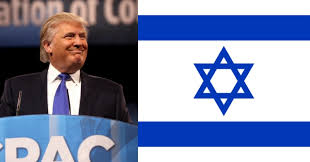Zionist Extremism as Product of the Internal Dynamics of Judaism, Part 3: A Risky Strategy Becomes Mainstream
ZIONISM AS A “RISKY STRATEGY”
Zionism was a risky strategy—to use Frank Salter’s term62—because it led to charges of dual loyalty. The issue of dual loyalty has been a major concern throughout the history of Zionism. From the beginnings of Zionism, the vast majority of the movement’s energy and numbers, and eventually its leadership, stemmed from the Eastern European wellspring of Judaism.63 In the early decades of the twentieth century, there was a deep conflict within the Jewish communities of Western Europe and the U.S., pitting the older Jewish communities originating in Western Europe (particularly Germany) against the new arrivals from Eastern Europe, who eventually overwhelmed them by force of numbers.64 Thus, an important theme of the history of Jews in America, England, and Germany was the conflict between the older Jewish communities that were committed to some degree of cultural assimilation and the ideals of the Enlightenment, versus the Yiddish-speaking immigrants from Eastern Europe and their commitment to political radicalism, Zionism, and/or religious fundamentalism. The older Jewish communities were concerned that Zionism would lead to anti-Semitism due to charges of dual loyalty and because Jews would be perceived as a nation and an ethnic group rather than simply as a religion. In England, during the final stages before the issuance of the Balfour Declaration, Edwin Montagu “made a long, emotional appeal to his colleagues [in the British cabinet]: how could he represent the British government during the forthcoming mission to India if the same government declared that his (Montagu’s) national home was on Turkish territory?”65
…
ZIONIST EXTREMISM BECOMES MAINSTREAM
Since the Second World War, there has been a long evolution such that the American Jewish community now fully supports the settler movement and other right-wing causes within Israel. Zionists made a great deal of progress during the Second World War. They engaged in “loud diplomacy,” organizing thousands of rallies, dinners with celebrity speakers (including prominent roles for sympathetic non-Jews), letter-writing campaigns, meetings, lobbying, threats against newspapers for publishing unfavorable items, insertion of propaganda as news items in the press, and giving money to politicians and non-Jewish celebrities in return for their support.80
By 1944, thousands of non-Jewish associations would pass pro-Zionist resolutions, and both Republican and Democratic platforms included strong pro-Zionist planks, even though the creation of a Jewish state was strongly opposed by the Departments of State and War.81 A 1945 poll found that 80.5% of Jews favored a Jewish state, with only 10.5% opposed.82 This shows that by the end of the Second World War, Zionism had become thoroughly mainstream within the U.S. Jewish community. … What had once been radical and viewed as dangerous had become not only accepted, but seen as central to Jewish identity. Read more







